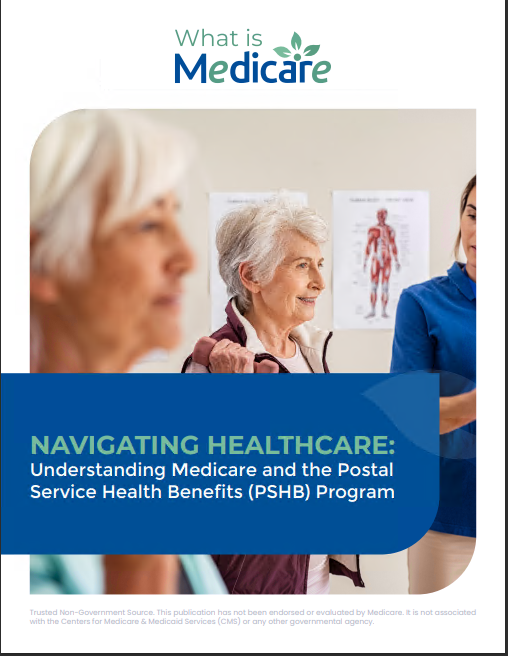Postal Service Health Benefits (PSHB) Program
Introduction to the Postal Service Health Benefits (PSHB) Program
The Postal Service Health Benefits (PSHB) Program is a specialized healthcare program established within the Federal Employees Health Benefits (FEHB) program, specifically tailored to meet the healthcare needs of USPS professionals and retirees. Enacted as part of the Postal Service Reform Act of 2022, the PSHB Program aims to provide comprehensive and cost-effective health insurance coverage for USPS employees and annuitants.
Key Features of the PSHB Program
The PSHB Program mirrors the structure of the FEHB program but with distinct rates and coverage options tailored to the unique needs of USPS professionals and retirees. One of the key features of the PSHB Program is its integration with Medicare, which allows eligible individuals to leverage Medicare benefits alongside their PSHB coverage. This integration helps reduce overall healthcare costs and provides greater value to annuitants.
In January 2025, the PSHB program will introduce plans parallel to FEHB plans, exclusively available to postal workers, annuitants, and their covered family members. Operationally overseen by the Office of Personnel Management (OPM), PSHB plans are obliged to deliver equivalent benefits and cost-sharing requirements as stipulated by FEHB plans, with exceptions made for Medicare Part D integration.
Eligibility for the PSHB Program
USPS employees and annuitants are eligible to enroll in the PSHB Program. Employees must meet the eligibility criteria specified by the USPS and the Office of Personnel Management (OPM) to qualify for coverage. Annuitants are eligible for PSHB coverage if they meet certain criteria, such as retiring from USPS with a minimum number of years of service and enrolling in Medicare Part B.
While employment with the Postal Service does not necessitate Medicare enrollment, certain employees must enroll in Medicare Part B to maintain PSHB coverage post-retirement. An annuitant before January 1, 2025, or an active employee aged 64 or older on that date, is exempt from this requirement. However, active employees under 64 as of January 1, 2025, and those retiring after that date and under 64, are generally mandated to enroll in Medicare Part B upon retirement and Medicare Part A eligibility. Exceptions to this requirement are outlined below.
The Social Security Administration (SSA) will notify individuals of their eligibility for Medicare Part B enrollment during their initial enrollment period. Exceptions to the Medicare Part B enrollment mandate include residency outside the United States or its territories, enrollment in Department of Veterans Affairs healthcare benefits, or eligibility for Indian Health Service healthcare services. Annuitants must provide evidence of eligibility for these exceptions to the relevant agency.
Coverage Options Under the PSHB Program
The PSHB Program offers a range of coverage options, including individual, self plus one, and family plans. These plans provide comprehensive coverage for medical services, prescription drugs, preventive care, and other essential healthcare needs. Additionally, the PSHB Program may offer supplemental benefits, such as dental, vision, and hearing coverage, depending on the plan selected.
Enrollment Process for the PSHB Program
The enrollment process for the PSHB Program typically occurs during the annual open season, which allows USPS employees and annuitants to select their preferred health insurance plans for the upcoming year. During this period, individuals can review plan options, compare coverage benefits and costs, and make changes to their coverage as needed. Additionally, special enrollment periods may be available for individuals experiencing qualifying life events, such as marriage, birth, or adoption.
Medicare Integration in the PSHB Program
Medicare integration is a fundamental aspect of the PSHB Program, allowing eligible individuals to access Medicare benefits in conjunction with their PSHB coverage. Medicare Part B enrollment is typically required for PSHB coverage to ensure comprehensive healthcare benefits for annuitants. However, certain exemptions may apply based on age, employment status, and other factors.
Advantages of the PSHB Program
The PSHB Program offers several advantages for USPS professionals and retirees. By integrating with Medicare, the program helps reduce healthcare costs and provides access to a broader range of healthcare services. Additionally, the PSHB Program offers flexibility and choice in coverage options, allowing individuals to select plans that best meet their needs and budget.
Conclusion
The Postal Service Health Benefits (PSHB) Program plays a vital role in providing comprehensive healthcare coverage for USPS professionals and retirees. With its integration with Medicare and tailored coverage options, the PSHB Program aims to meet the unique healthcare needs of USPS employees and annuitants while ensuring cost-effective and accessible healthcare services.
Contact Information:
Email: [email protected]
Phone: 9845552345










